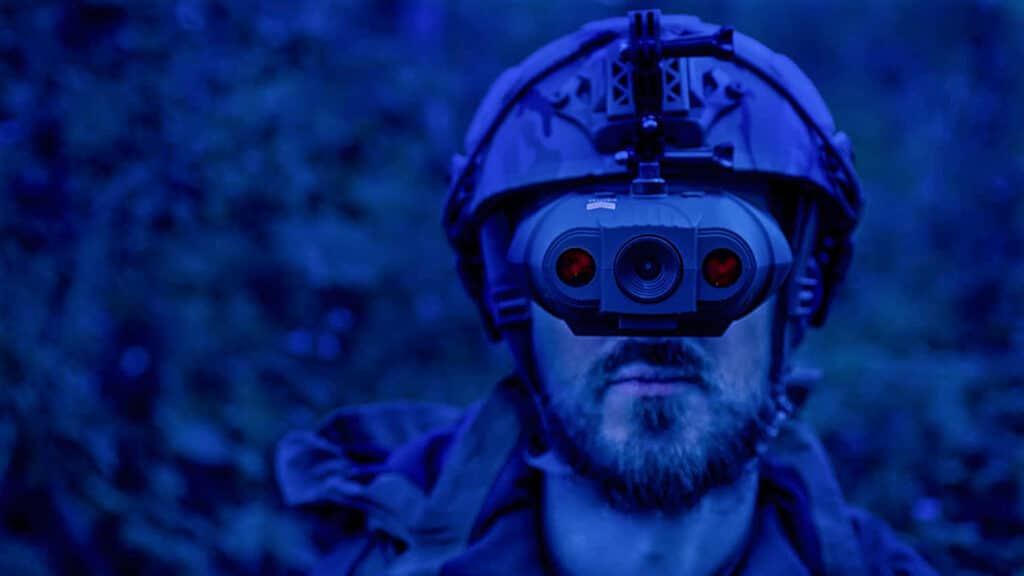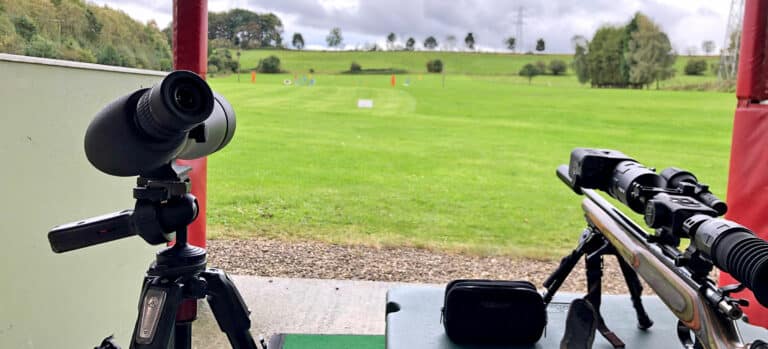Night vision binoculars are a popular tool for wildlife watching and other low-light activities. To get the most out of your purchase, it’s important to understand how they work and what features to look for when buying. In this article, we’ll cover both of these topics in detail.

How Do Night Vision Binoculars Work?
Night vision binoculars work by amplifying the available light in two ways: optoelectronic image enhancement and digital image enhancement.
Optoelectronic Image Enhancement
Optoelectronic image enhancement is the traditional method of night vision. It works by capturing small amounts of infrared light available at night and enhancing it electronically. Then, an image-enhancing vacuum tube amplifies the light before projecting it onto a screen to produce the glowing green night vision image.
When shopping for optoelectronic night vision binoculars, you will see references to “Generation 1, 2,” etc. The higher the generation number, the better the image quality and the higher the price. For most people using night vision binoculars for wildlife watching, generation 1 or 2 offers a good balance between function and cost.
Digital Image Enhancement
Most night vision devices today use digital image enhancement. Digital devices amplify the available light using a CMOS sensor, which is also used in digital cameras. This means they don’t need the vacuum tube and can be smaller and lighter than optoelectronic devices. It also allows them to produce color images rather than the glowing green variety.
Early digital night vision binoculars were expensive and didn’t offer the image clarity of traditional models. But digital technology is getting better and cheaper all the time. Because digital devices are using camera technology, it’s also possible to have them take and record pictures or videos. As well as viewing on an internal LCD screen, some will allow you to connect to external devices for viewing.
What to Consider When Buying Your Night Vision Binoculars
Night vision technology is complicated, and there are many things to consider when choosing which model to buy. The following sections will cover some of the most important factors to consider.
Image Quality and Resolution
Image quality is one of the most important factors to consider. But it’s also one of the most difficult to assess from the technical specifications, as several binocular features contribute to image quality. The factors impacting image quality will vary depending on the technology your binoculars are built with. The generation of the vacuum tubes, the power of the light amplification unit, the wattage of infrared illuminators, and the CMOS sensor’s size can all have an impact.
Resolution is a term often used in relation to image quality. The higher the resolution, the sharper your image is going to be. When looking at digital models, you need to consider both the resolution of the binoculars viewing screen and the sensor’s resolution, as both will impact the clarity of what you see. There is a trade-off between resolution and price. There comes a point where you can be paying for higher and higher resolution without actually being able to see any difference at all.
Infrared Illuminators
An infrared illuminator works like a flash on your camera. It adds extra light to the scene. For night vision devices, infrared illuminators add infrared light. This is invisible to the human eye but will help your binoculars to capture a better picture. The binoculars you choose should have built-in infrared illuminators, and the option for a variety of levels will allow them to adapt to different situations.
Magnification
Though magnification is what you buy daytime binoculars for, don’t get too excited about the magnification in night vision binoculars. Whilst standard binoculars can offer magnification of 10x or more don’t expect this from night vision models. It’s just not possible in low-light conditions. For most night vision binoculars you can expect 1x to 5x optical magnification. This may be enhanced with variable le digital magnification or zoom.
Digital magnification has its place, but those of you who understand a bit about how cameras work will know that whilst optical magnification actually adds detail to the picture, digital magnification just “crops” the image, to bring you closer to what was already there. So the image can get blurry or “pixilated”. So, optical magnification is the thing you really need to look out for. You will often see magnification expressed as 5×35 or 3×40, for example. The first number refers to the actual magnification. The second number is the diameter of the objective lens. This is the lens that collects the light into the binoculars. If you see binoculars with WA after these numbers, so “5×35 WA” for example, this means the lens is wide-angle, and you can expect a wide field of view.
Realistically though, if you are using your binoculars to look at wildlife at night you are probably going to be focusing on things that are relatively near to you, maybe 100-150 meters away at most, so lack of high magnification isn’t really going to be that much of an issue.
Field of View
The field of view is the area you can see through your binoculars. It’s important because a wider field of view makes it easier to spot activity and track wildlife without continually moving your head and binoculars. The field of view is usually expressed as an angle, for example, 40 degrees. But it can also be expressed as a number of feet or meters at a specific distance.
Exit Pupil
Exit pupil refers to the size of the beam of light that enters your eye from the binoculars. This is determined by the diameter of the objective lens (the lens at the front of the binoculars). The exit pupil diameter is calculated by dividing the objective lens diameter by the magnification. For example, if you have 10×50 binoculars, the exit pupil diameter will be 5mm.
This is important because your pupils can only expand so far, and the larger the exit pupil diameter, the more light enters your eye. This can make a big difference when you are using your binoculars in low-light conditions.
Eye Relief
Eye relief is the distance between the eyepiece and your eye when you are viewing an object through binoculars. This is important if you wear glasses or have eyesight problems. A longer eye relief will allow you to see the whole image without having to take your glasses off, and it can also make it more comfortable to use the binoculars for long periods of time.
Durability and Weather Resistance
Night Vision Binoculars can be expensive, so it’s important to choose a model that is durable and will last for years. Look for binoculars that are made from high-quality materials and have sturdy construction. You may also want to look for binoculars that are weather-resistant, so you can use them in all kinds of conditions.
Conclusion
Night vision binoculars are an amazing tool for anyone who wants to explore the world after dark. They can help you see animals that are active at night, identify stars and constellations in the sky, and even keep you safe in low-light conditions. With the advancement of technology, there are now many different types of night vision binoculars available, from affordable entry-level models to high-end options with advanced features. Whatever your budget or intended use, there is a night vision binocular out there for you. So why not step out of your comfort zone and discover the fascinating world that awaits you after dark with a pair of night vision binoculars?





